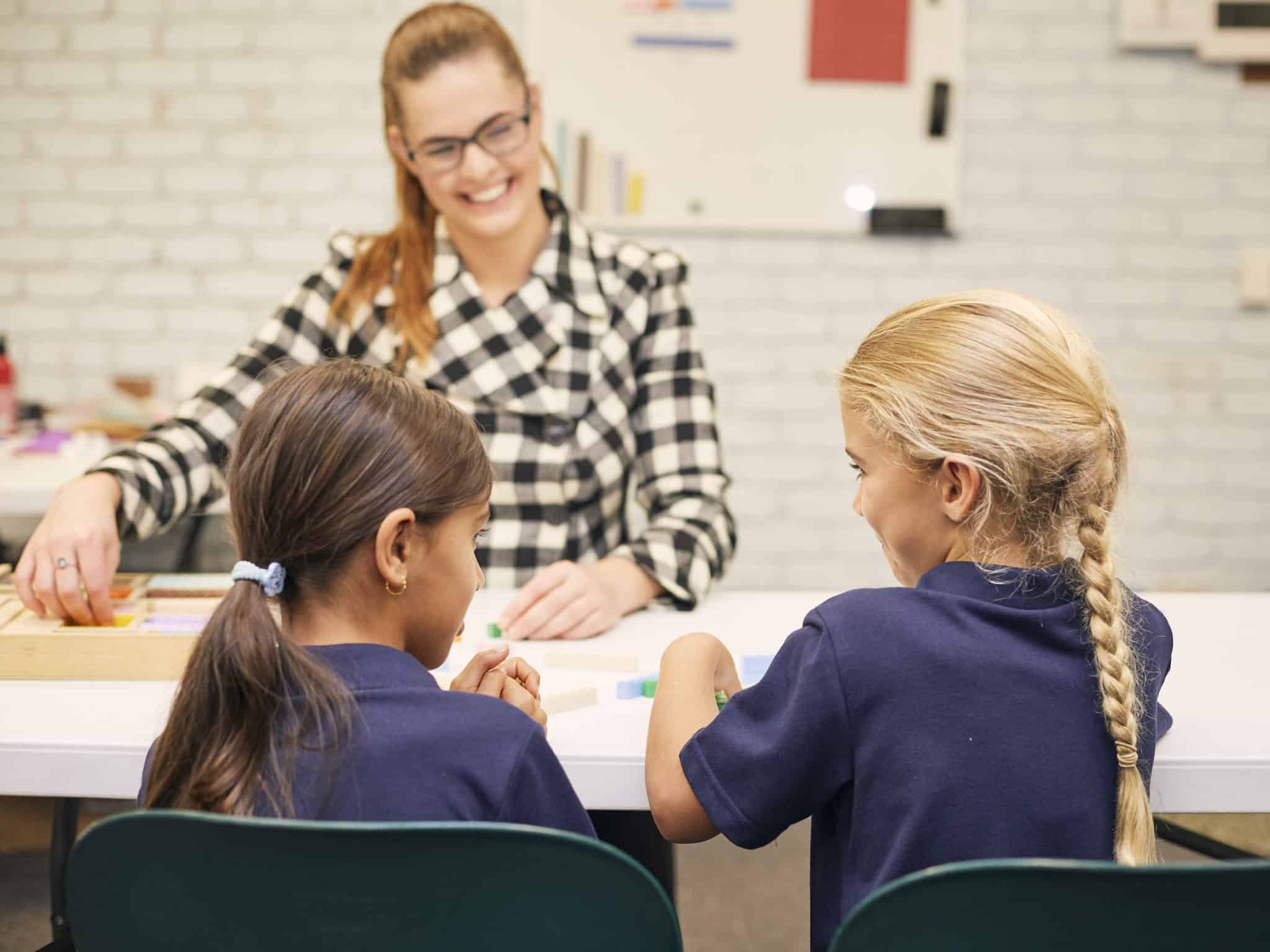
Why is specific sequence important when teaching maths?
At the beginning of a student’s math education, we focus on their learning of the fundamentals. From numbers to counting, to addition and subtraction, we go in order. However as students’ progress through school, we place less emphasis on sequence. For instance, order of operations is essential to learning Algebra. However, we too often introduce the concept, then proceed full steam ahead before understanding if it has been mastered. Learning things in this manner cause problem as lessons become more advanced.
Think of it like building a house. If your foundation is shaky but you continue building, the house may eventually collapse. This is especially apparent in a number of key situations in a student's education, especially when learning Place Value.
Therefore, we've compiled a few importatn factors that need to be considered when teaching your student maths - or any subject, for that matter. By teaching using specific sequencing, you not only increase understanding and retention of maths concepts, but also increase student engagement and confidence.
What is number sequencing?
Number sequencing is nothing but the numbers arranged in a certain order or pattern. Children get an early glimpse of number sequencing in preschool days when they learn to dodge numbers by 1s, 2s, 3s, and so on.
There are many types of number sequencing, such as geometric sequencing and fibonacci sequencing. You can read more about types of number sequencing here.
How does number sequencing work?
Can you remember learning how to swim? How were you taught? Did they just throw you into to water and tell you to go for it? Or were you taught how to control your breath underwater, float, the mechanics of moving your body through the water? While it is possible to figure out how to swim using the “sink or swim” method, it is more likely you would be successful if you taught step by step. Sequence is important when learning anything new, especially maths.
The key to successful teaching in sequential order is understanding your student’s pace. While it may take them days to learn one topic, another may take weeks. If the student is taking longer to learn, it can be tempting to rush them. Don’t. It is better to take the time now and set them up for success later. One should not be compromised for the other. Sequential learning and following your student's learning pace go hand in hand.
How does number sequencing impact maths?
As your student progresses on the path of learning maths, the concepts of estimation, probability, and other important concepts, they must understand number sequencing first. There are a range of key concepts that are impacted by your student's understanding of this essential topic.
How do you teach students with learning differences?
Number sequencing is essential when teaching maths. Students must know what numbers are, where to put them and how to use them correctly.
However, the fact that your student may not understand this concept can relate to a few different factors. If your student has learning differences, this will impact their understanding and comprehension of maths. And, it may be more common than you think. Here are some facts about learning differences:
Of these learning difficulties, a few are such that stay undiagnosed behind others that show similar symptoms. Dyscalculia is one such learning disorder. I have covered it extensively in various articles on this platform and now I intend to move deeper and give an insight into the specific number learning difficulties, such as number sequencing, faced by dyscalculic children.
The most important thing you can use with students who have dyslexia, dyscalculia and other learning differences is hands-on manipulatives. This means you are engaging the kinaesthetic brain and increasing retention, understanding and knowledge of maths concepts. Using a hands-on approach also works for any student, no matter if they have learning differences or not. It's an effective, all-round approach that has worked for thousands of parents, teachers and tutors across Australia.
Let's discuss a few more things that will help with number sequencing for your student. By integrating these methods, you will have much more success with teaching maths.
3 Tips for Using Specific Sequencing
1. Ask your student if the teaching pace suits them
Ask your students if they feel comfortable with the speed at which the math is being taught. Take additional time to focus on foundational concepts that they struggle with to help them master the material.
Sometimes, students need to take extra time and need more support to learn what is being taught. This time spent on a particular topic links directly back to the way the topic is being introduced, as well as the resources that are being used to teach the concept, but it also comes down to the pace of your student's integration of new information.
Some students have taken a day to complete a lesson while others have taken 3 weeks. It is totally up to you and your student, and the reward when they finally get that "aha" moment and understand how to use what they have been taught in daily life is certainly worth it. With key foundational concepts, like Place Value, if your student doesn't understand it in the beginning, it will continue to hinder their maths understanding through high-school and beyond. It's worth it putting in effort now!
2. Frequently review previous material
Making time for review and practising what has been taught is an important key to your student's maths success. Frequently reviewing previously learned math skills with your students gives them time and space to integrate what has been taught and to understand the concepts on a deeper level. Rushing through content without revision time can be overwhelming and can lead to giving up.
Revision can take any form that suits you and your students - you can revise maths facts and concepts by using maths games and activities, outdoor activities such as soccer and basketball while practising times tables, and loads of other maths activity ideas. You can print off maths facts sheets and revise them together, or sing maths songs while driving in the car. It's entirely up to you and your student.
You can download printable maths facts sheets and a whole lot more free maths resources here.
3. Notice when they are frustrated
Pay attention if your children seem continually frustrated with learning math — frustration is often a sign that they have not mastered previous material and that is interfering with new learning. Learning math in sequence and at an individualised pace is absolutely crucial for success in learning.
Frustration may be occuring for your student because they are not being taught in a way that makes sense to them. There are 4 main learning styles that impact a student's integration and understanding of knowledge, with multisensory (kinaesthetic) being the most effective way to learn new concepts. By using hands-on tools, you are making maths concepts easy for your students to learn - and much easier for you to teach!
Getting some help might be the answer
Sometimes it's a good idea to get some help on those tricky subjects. Especially if you are finding yourself over your depth when teaching maths (it's a tricky subject when you don't know what you're doing!) and finding some support is the best way forward.
You don't need anything for these Trainings - no prerequisites required. We've had parents who hated maths at school and teachers who have never taught the subject before excelling with these professional and effective Trainings.

MATHS CONFIDENCE FOR PARENTS
Sometimes you just need a little more support when tackling the job of being a mum and a teacher for your kids (especially if you've had no prior experience!) We've got specific Parent Trainings that are designed to show you exactly what to do and how to do it. You'll gain much more confidence teaching and your kids will love you!

EFFECTIVE MATHS FOR TUTORS
Even thought the Math-U-See lessons are easy to use for individual students and groups, its helpful having a few more specific methods to use and ways to teach your pupils.
Tutors want their students to achieve the best results - that's why we're here. We'll make sure you have everything you need to teach maths in a better way and have more confident, engaged students! Our Trainings will give you the hands-on tools you need and the methods on how to teach effectively.

CLASSROOM MATHS AND INTERVENTION FOR SCHOOLS
Students can often go through the spiral approach of maths learning (the method often used in schools) and come out bewildered and confused. Many students often haven't even mastered Place Value properly, which is the first foundational lesson in the Math-U-See program. Student's often don't understand the abstract concept of numbers and need the hands-on, multisensory approach. In our Trainings, we teach you how to use a variety of hands-on tools to teach maths effectively. Perfect for intervention, those with learning differences and entire classroom curriculum.
